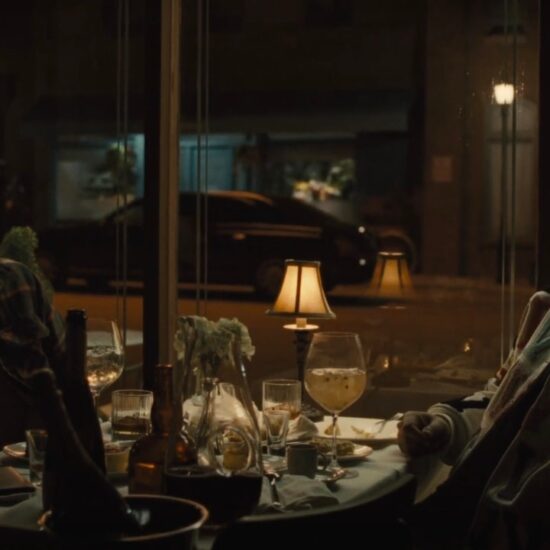
Ever wondered how filmmakers transform their creative visions into captivating on-screen experiences? The answer lies in the art of storyboarding, a powerful tool that bridges the gap from concept to execution in video production. Imagine a visual roadmap paving the way from the first flicker of inspiration to the final, awe-inspiring cut. In this article, we will delve into the essential aspects of storyboarding techniques, exploring both traditional hand-drawn methods and digital tools. Join us on this journey of imagination and collaboration, as we uncover the secrets behind successful video production through the art of storyboarding.
Understanding the Basics of Storyboarding
What is Storyboarding?
Storyboarding is like a map that guides video production, using sequential drawings or images along with notes. It helps plan out the important scenes and shots, creating a visual representation much like a comic book for the video. Storyboarding has evolved from paper to AI storyboards.
Benefits of Using Storyboards in Video Production
- Streamlining Pre-Production: Visualizing the entire video beforehand helps identify and address potential issues early on.
- Visualizing the Narrative: Storyboards provide a clear visual representation of the video’s flow and storytelling.
- Facilitating Communication: Storyboards serve as a common reference point, fostering effective communication and collaboration.
- Identifying Solutions: Anticipating challenges allows for creative problem-solving before shooting begins.
Key Elements of a Storyboard
- Visual Representation: Clear sketches or illustrations of scenes and actions.
- Shot Descriptions and Camera Angles: Specify shot types and camera movements.
- Annotations and Notes: Provide additional context, technical instructions, or dialogue details.
Preparing for Storyboarding
Before diving into storyboarding, here are the essential steps:
- Define project goals and target audience.
- Conduct thorough research for insights.
- Develop a script or detailed outline.
- Collaborate with the team for a unified vision.
Once you’re ready to get started, there are different techniques you can choose from:
Different Storyboarding Techniques
Traditional Hand-Drawn Storyboarding
Traditional hand-drawn storyboarding is a timeless method used by artists in the film industry. It requires basic tools like pen and paper, offering creative freedom and a personal touch to the visuals.
Tools and Materials Required:
- Pen or pencil
- Paper or storyboard sheets
- Eraser (for making changes)
- Ruler (optional for precision)
Traditional hand-drawn storyboarding allows artists to bring their artistic vision to life and infuse a unique essence into each frame. With the simplicity of pen and paper, creators can sketch intricate details and add a personal touch that digital tools might not fully capture.
Digital Storyboarding
Digital storyboarding has gained popularity due to its efficiency and collaborative features. Artists and filmmakers use specialized software to create dynamic storyboards with multimedia integration.
Advantages and Efficiency:
- Quick and Easy Edits: Digital storyboarding allows for swift changes and revisions, saving time and effort.
- Real-Time Collaboration: Team members can provide feedback and edits remotely, enhancing collaboration.
- Multimedia Integration: Digital tools offer options to add audio, motion, and basic animations, providing a more immersive experience.
Recommended Software Options:
- Adobe Illustrator: A powerful vector graphics software that allows artists to create polished and detailed storyboards, suitable for those familiar with Adobe’s design suite.
- StoryboardHero (AI Storyboard Generator): An exciting new tool harnessing the power of AI to generate storyboards in just one click, promising to streamline the process with cutting-edge technology.

Crafting an Effective Storyboard
- Establish the visual style and tone: Determine the aesthetic, mood, and atmosphere aligned with the video’s goals, setting the stage for the entire storyboard.
- Break down the script: Divide the script into scenes and shots, capturing essential moments for a coherent narrative.
- Use visuals to enhance storytelling: Employ framing, composition, and cues to communicate emotions and information effectively.
- Balance creativity with practicality: Consider budget and resources while maintaining imaginative visuals within project limitations.
- Create a seamless storyboard sequence: Ensure smooth flow, transitions, and continuity for a coherent storytelling experience during video execution.
Looking to elevate your storyboards? Keep these additional tips in mind:
Tips for Enhancing Your Storyboards
- Add motion and dynamic elements for action and pacing.
- Incorporate temporary audio and sound effects for immersion.
- Experiment with shot compositions for visual variety.
- Use color and lighting to set the desired mood.
But, that’s not all. One of the valuable steps you shouldn’t skip in creating storyboard is:
Collaboration and Feedback
Collaboration and feedback are integral aspects of the storyboarding process, fostering teamwork and enhancing the overall quality of the video production. During pre-production, it is crucial to share the storyboard with the production team, including directors, writers, and designers. This open exchange of ideas ensures that everyone is aligned with the project’s vision and can provide valuable insights. Encouraging feedback and constructive criticism helps identify potential improvements and address any concerns before moving forward.
As the storyboard evolves, iterating and refining based on team input enhances the storyboard’s effectiveness. Emphasizing open communication and a collaborative spirit among team members leads to a more cohesive and successful video production.
So, what’s next?

Finalizing the Storyboard and Moving Forward
Once the storyboard has undergone the collaborative process and received feedback, it’s time to finalize it for production. This crucial step ensures that all necessary adjustments and improvements have been incorporated, and the storyboard accurately reflects the creative vision and objectives. Reviewing the approved storyboard helps verify that the visual style, tone, and storytelling align with the project’s goals. At this stage, it is essential to remain flexible, understanding that minor tweaks may still occur during production.
As the team moves forward, the finalized storyboard serves as a guiding document for all aspects of the video production, from set design to cinematography. Utilizing the storyboard as a production guide ensures a smooth and efficient process, ultimately leading to a final video that resonates with the intended audience and successfully brings the creative vision to life.
Conclusion
Storyboarding is the backbone of successful video production, bridging creative vision and the final product. Whether using traditional hand-drawn or digital techniques, an effective storyboard ensures a cohesive narrative and smooth execution. Collaboration and feedback enhance the storyboard’s quality, while motion, audio, shot variations, and strategic use of color add depth. By embracing these techniques, filmmakers can confidently create captivating videos that resonate with audiences, bringing their creative visions to life with remarkable success.
JC Bouglé, is a French entrepreneur based in Singapore. He has been doing video production since 2011 and founded one of the leading corporate video production agencies in Singapore (fewStones). He also founded tech solutions for video production, including StoryboardHero.ai, an online solution for storyboarding.















